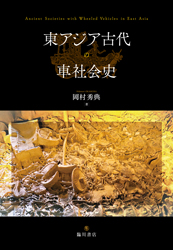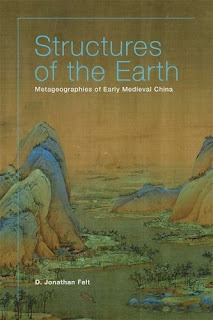Editors:
Mark Csikszentmihalyi & Michael Nylan
Publisher:
SUNY Press
SUNY Press
Publication date:
November 2021
November 2021
Abstract:
While cultural literacy in early China was grounded in learning the Classics, basic competence in official life was generally predicated on acquiring several forms of technical knowledge. Recent archaeological finds have brought renewed attention to the use of technical manuals and mantic techniques within a huge range of discrete contexts, pushing historians to move beyond the generalities offered by past scholarship. To explore these uses, Technical Arts in the Han Histories delves deeply into the rarely studied “Treatises” and “Tables” compiled for the first two standard histories, the Shiji (Historical Records) and Hanshu (History of Han), important supplements to the better-known biographical chapters, and models for the inclusion of technical subjects in the twenty-three later “Standard Histories” of imperial China. Indeed, for a great many aspects of life in early imperial society, they constitute our best primary sources for understanding complex realities and perceptions. The essays in this volume seek to explain how different social groups thought of, disseminated, and withheld technical knowledge relating to the body, body politic, and cosmos, in the process of detailing the preoccupations of successive courts from Qin through Eastern Han in administering the localities, the frontier zones, and their numerous subjects (at the time, roughly one-quarter of the world’s population).
While cultural literacy in early China was grounded in learning the Classics, basic competence in official life was generally predicated on acquiring several forms of technical knowledge. Recent archaeological finds have brought renewed attention to the use of technical manuals and mantic techniques within a huge range of discrete contexts, pushing historians to move beyond the generalities offered by past scholarship. To explore these uses, Technical Arts in the Han Histories delves deeply into the rarely studied “Treatises” and “Tables” compiled for the first two standard histories, the Shiji (Historical Records) and Hanshu (History of Han), important supplements to the better-known biographical chapters, and models for the inclusion of technical subjects in the twenty-three later “Standard Histories” of imperial China. Indeed, for a great many aspects of life in early imperial society, they constitute our best primary sources for understanding complex realities and perceptions. The essays in this volume seek to explain how different social groups thought of, disseminated, and withheld technical knowledge relating to the body, body politic, and cosmos, in the process of detailing the preoccupations of successive courts from Qin through Eastern Han in administering the localities, the frontier zones, and their numerous subjects (at the time, roughly one-quarter of the world’s population).
Table of Contents:
Introduction
Michael Nylan 戴梅可 and Mark Csikszentmihalyi 齊思敏
Michael Nylan 戴梅可 and Mark Csikszentmihalyi 齊思敏
1. Land Tenure and the Decline of Imperial Government in Eastern Han
Michael Loewe 魯惟一
Michael Loewe 魯惟一
2. Water Control and Policy-Making in the Shiji and Hanshu
Luke Habberstad 何祿凱
Luke Habberstad 何祿凱
3. The Hanshu Geographic Treatise on the Eastern Capital
Lee Chi-hsiang 李紀祥
Lee Chi-hsiang 李紀祥
4. Celestial Signs in Three Historical Treatises
Jesse J. Chapman 柴傑思
Jesse J. Chapman 柴傑思
5. On Hanshu "Wuxing zhi" 五行志 and Ban Gu's Project
Michael Nylan 戴梅可
Michael Nylan 戴梅可
6. Western Han Sacrifices to Taiyi
Tian Tian 田天
Tian Tian 田天
7. Writing Abstractly in Mathematical Texts from Early Imperial China
Karine Chemla 林力娜
Karine Chemla 林力娜
8. Commentarial Episodes in Early Chinese Medicine: An Experiment in Decentering the Standard Histories
Miranda Brown 董慕達
Miranda Brown 董慕達
9. Narratives of Decline and Fragmentation, and the Hanshu Bibliographic Taxonomies of Technical Arts
Mark Csikszentmihalyi 齊思敏 and Zheng Yifan 鄭伊凡
Mark Csikszentmihalyi 齊思敏 and Zheng Yifan 鄭伊凡



















